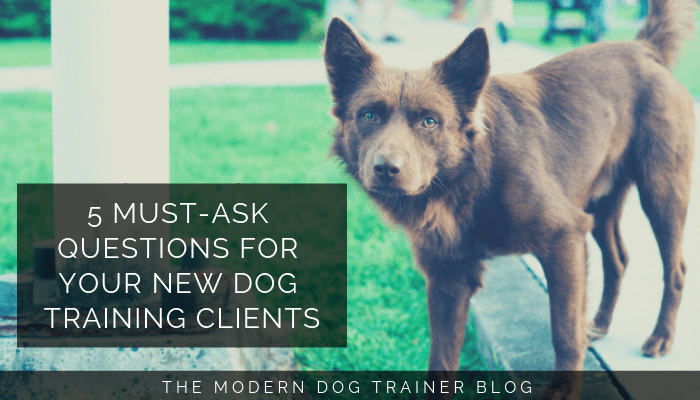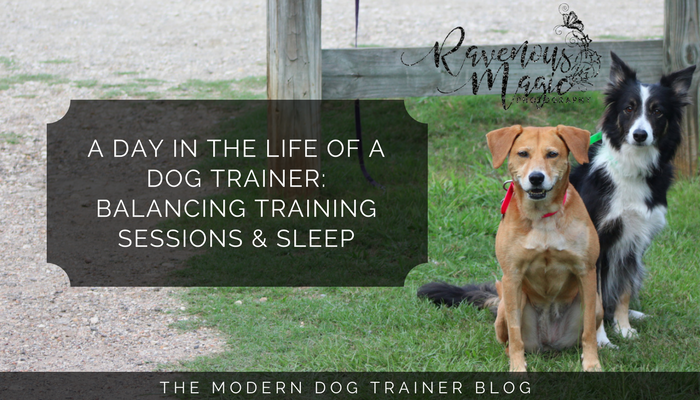 Have you ever thought about adding dog training services to your grooming, pet sitting, or pet store business? Dog training is a crucial part of raising a new dog in today’s busy and social world.
Have you ever thought about adding dog training services to your grooming, pet sitting, or pet store business? Dog training is a crucial part of raising a new dog in today’s busy and social world.
Your clients are already looking to you for guidance when it comes to other aspects of their dogs’ care so why not provide an extra, special experience for them and their beloved canine?
Benefits of Adding Dog Training Services to Your Pet Business
Providing dog training services for your clients will help your pet business become the go-to place for all your clients’ dog care needs.
Value-Added Offering
If your business is already a hub of pet owners, adding dog training services will enhance their experience and help you become even more of a pet industry leader in your community. Offering dog training services is a wonderful value-add offering for your clients.
Key Differentiator And Customer Loyalty
Unlike veterinary services, dog training is unregulated so it is fairly easy to add these services to an existing business. This can help you differentiate your business from other pet businesses in the area.
Whether you’re a groomer, pet sitter, or pet store, dog training services can help your business stand out as one that truly goes the extra mile for their customers. This will help grow your customer’s loyalty to your particular business for the life of their pet.
Easy Sell
It is well known in the business world that increasing sales to existing clients is much easier and provides a better ROI than working to acquire a completely new customer.
You already have customers who may be struggling with their dog’s behaviors or who may have just gotten a new puppy that need dog training services. Why not offer services that your existing customers need?
New Income Opportunity
Without even having to acquire one new customer, you can increase your income by offering additional services to existing clients. When structured correctly, dog training services could help generate consistent foot traffic and sales for your pet business.
Hiring Someone vs Learning the Skills Yourself
Whether you should hire a dog trainer or become a dog trainer yourself will depend on how quickly you want to begin offering these services.
If dog training is something you want to begin offering this year, look for someone that can meet the needs of your clients in your community. Becoming a good dog trainer will take some time, education, and experience and there is likely someone else in your community with the right skillset and is waiting for this kind of opportunity.
You can hire them and then take some time to acquire the right dog training skills yourself. Rushing into training your customers’ dogs without understanding animal learning theory could be detrimental for the long term success of your business, your customers, and their dogs.
Qualifications of a Good Dog Trainer
Whether you choose to become a dog trainer yourself or hire someone to come in and offer classes in your space, there are a few things you should look for or acquire.
Like I mentioned above, dog training is not currently regulated in the US. This makes it difficult to differentiate qualified dog trainers from unqualified ones.
As a dog trainer with over 10 years in the industry, here are a few expectations I’d have of a qualified dog trainer:
Consistent Continuing Education & Certification
- Regularly Attend Seminars – A great dog trainer will consistently attend seminars and conferences. This exposes them to other ways of training and expands their understanding of dog training. Just like in any industry, the best keep their skills and knowledge sharp!
- Certification – The CCPDT is the leading independent certifying organization for the dog training profession. Certifications from this organization are often a good sign that a dog trainer is committed to education, experience, and choose to abide by modern and humane dog training practices.
- Formal Courses – Many trainers opt to invest in formal in-person education through a variety of dog training schools (Karen Pryor Academy, Dog Trainers Academy, CATCH, etc). In my opinion, these are certainly a plus, but are not completely necessary to becoming a great dog trainer. They are often very expensive and do not necessarily prove that someone knows how to train a variety of dogs. Structured education based on the science of learning theory plus adequate experience is a perfect combination.
Experience
Dog trainers can acquire substantial experience through a variety of avenues. Working with a variety of dogs and their people is the best way to learn how to apply what you learn in a course, seminar, or book to real life situations.
Look for dog trainers with experience:
- Working with rescue dogs – You’ll likely have many customers that adopt puppies and dogs from a rescue. These dogs often come with unique challenges due to their unstable upbringing and unknown genetic history.
- Working with young puppies – Puppies will require consistent training for at least the first two years of their lives, so find a trainer that can set up your clients with a training program or plan for the duration. Puppies need different behaviors addressed as they progress through puppyhood, adolescence, and young adult stages.
Attitude
Finding team members with the right attitude might be the hardest piece. You want to make sure your new team members are on board with the way you want a training program implemented and find someone that can execute it to the best of their ability.
The dog training industry, just like the rest of the pet industry, has a high turnover rate due to the type of work and long hours. You’ll want to find someone that’s interested in working on your project for the long term.
Team Members
Many dog trainers get into dog training because they love dogs. Unfortunately, this doesn’t lend itself naturally to people that love spending time with other people. Be sure to evaluate your potential hires for personality and attitude towards others as well as their dog training and handling skills.
Customer Service
Training dogs requires patience, but often it is working with their people that is the most difficult part. Being a dog trainer means you are essentially becoming a teacher to people. People call and email you for help – not their dogs.
This should be a key consideration when building your dog training practice. Your policies on how to treat people and handle customer service issues should be clearly documented and discussed with potential employees. Set your employees up to be successful just as you would a customer!
Dog Training Insurance
Since you likely already have a pet business up and running, adding dog training services shouldn’t come with huge costs. It has a low barrier to entry.
I’m not a lawyer of any kind so please consult with your attorney for official recommendations for your business, but many dog trainers have the following insurances to cover their services and business.
- Professional Liability Insurance also known as errors and omissions (E&O) insurance – This insurance covers you and your business in case a client claims that you did not fulfill your promises when they hired you. Find company that is used to servicing dog trainers since trainers have unique circumstances to consider.
- Updated Property Insurance – Notify your existing insurance provider of the new services you’ll be offering and make sure they are covered under your existing plan or update it so that it is.
- Dog Trainer Liability Protection Coverage – Since you or someone in your business will be working with a variety of dogs with different behavior issues, this particular coverage is important. This insurance covers claims for bodily injury, personal injury or property damage to others. A good policy will include coverage for damage to property in your Care, Custody or Control including the Pet.
Consult with an attorney that is familiar with the unique situations that dog trainers come across to help you decide which insurance policy is necessary for your business.
Structuring Your Dog Training Services
Training services are usually delivered in a few standard ways:
- Private Lessons – These lessons are held one-to-one in the client’s home or public place. Private lessons help clients get precisely the assistance they need with their dog’s particular challenges.
- Group Classes – Group classes are typically held once a week for a few weeks with a start and end date. You may decide to customize the structure and implementation of your group classes to better suit your clients by making them open enrollment (on-going classes that anyone can join at any time).
- Day Training – Day training services typically supplement private lesson clients to help them make progress more quickly. With this service, the dog trainer works directly with the dog several times a week without the owner present.
- Board & Trains – A board and train program is when you host the dog in your facility for a few weeks to complete it’s training goals. It is an intensive program that is beneficial to dogs that can handle the environmental change from living at home. Board and trains are usually followed up with private lessons at home to make sure the dog maintains his new behaviors in the home environment.
Recurring or Drop-in Classes
Many trainers start off by offering single lessons for purchase or one group class at a time, but this is not a sustainable way to generate recurring income month to month. It also does not serve your customers in the best possible way because, in reality, they will need ongoing support and training throughout their dog’s life.
In order to better serve clients and their dogs, you could offer initial foundation classes followed up with recurring group classes or drop-in class memberships to come in for a training skills brush up when they need it.
Package Services Together
Since your pet business already has services and products to offer, you could easily transition to offering special packages or memberships to your clients that include dog training services.
For more information on packaging training services for the best results, consistent income, and how to set your pricing, check out the lesson:
Use this lesson to:
- Discover what services your customers really need and want.
- Research competitors to differentiate yourself.
- Create packages of services for results and sustainable income.
- Understand your operating costs.
- Learn about pricing strategies so you can charge enough for your services.
Includes: Lesson (2 Parts) + 2 Worksheets




 After having the opportunity to talk to many other dog trainers over the years, I’ve discovered some trends that I want to bring to your attention.
After having the opportunity to talk to many other dog trainers over the years, I’ve discovered some trends that I want to bring to your attention.



 On week days I generally do my private sessions in the evening. I prefer to sleep in and know that others also have day jobs that may not allow for training during the day. This gives me time to prepare myself and to do training when I’m at my best productive self which falls in the evening for me. I try to limit myself to a certain number of sessions a week to give my clients a fair amount of attention and to take time for myself. If I’m not 100% then I can’t help people in my best capacity.
On week days I generally do my private sessions in the evening. I prefer to sleep in and know that others also have day jobs that may not allow for training during the day. This gives me time to prepare myself and to do training when I’m at my best productive self which falls in the evening for me. I try to limit myself to a certain number of sessions a week to give my clients a fair amount of attention and to take time for myself. If I’m not 100% then I can’t help people in my best capacity. Marcella Ward uses positive reinforcement methods to help you more effectively communicate with your dog. She wants dogs and clients to enjoy working with each other and strives to increase the understanding between owner and dog. She is dedicated to continuous learning because the methods in which we teach our dogs are ever changing. There are new discoveries being made regularly and she strives to keep up with and use those methods to create a positive, happy learning environment for you and your dog. Dogs Speak Dog Training is located in the Houston, Texas area. Find more information at
Marcella Ward uses positive reinforcement methods to help you more effectively communicate with your dog. She wants dogs and clients to enjoy working with each other and strives to increase the understanding between owner and dog. She is dedicated to continuous learning because the methods in which we teach our dogs are ever changing. There are new discoveries being made regularly and she strives to keep up with and use those methods to create a positive, happy learning environment for you and your dog. Dogs Speak Dog Training is located in the Houston, Texas area. Find more information at 


